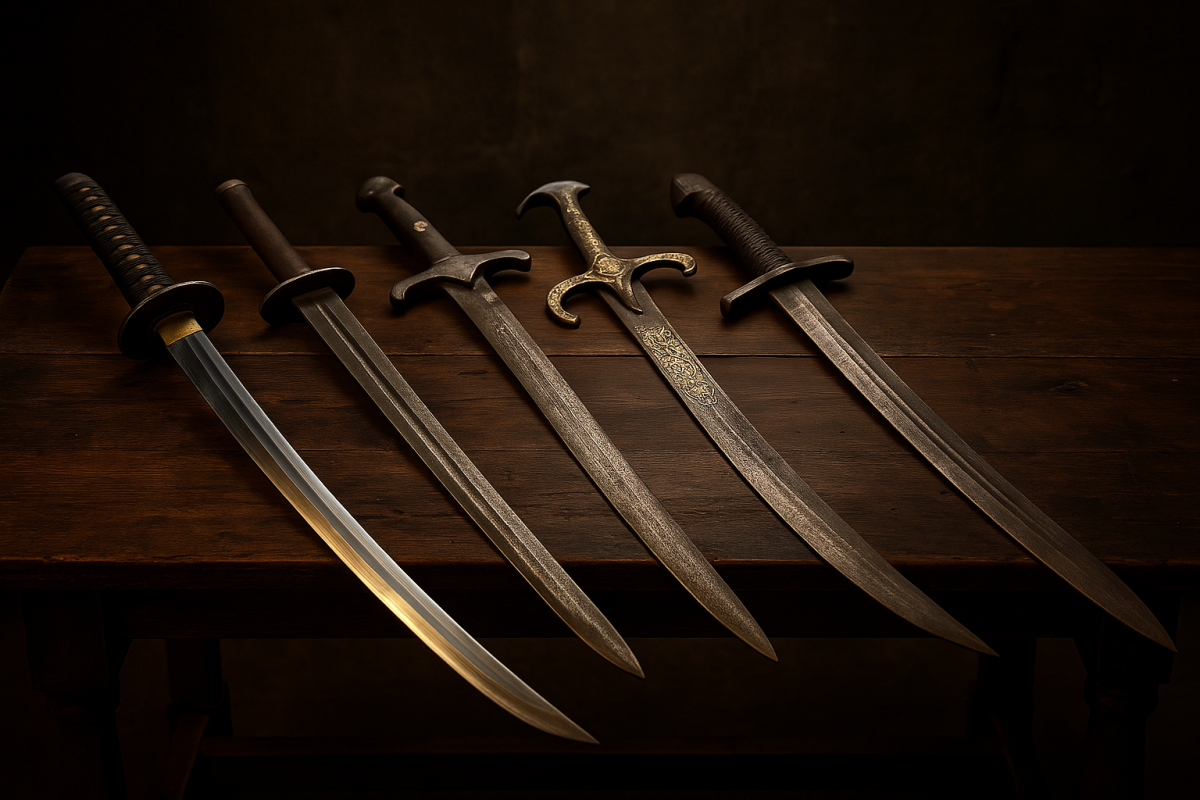The History of Collecting Handmade Swords
Collecting Handmade Swords
For centuries, handmade swords have fascinated warriors, nobles, collectors, and historians alike. These iconic weapons are more than just tools of war — they are masterpieces of craftsmanship, tradition, and culture. Today, sword collecting has become a passion shared across the globe, where enthusiasts seek not only aesthetic beauty but also historical and cultural significance.
Ancient Origins of Sword Collecting
The tradition of collecting swords can be traced back to ancient civilizations such as Egypt, Rome, and Mesopotamia. Nobles and rulers often preserved ceremonial blades crafted with precious metals and stones. These swords were not meant for battle, but for display, representing power, legacy, and prestige.
In Japan, samurai families passed down their katanas from generation to generation. These blades were considered sacred objects, symbolizing honor and spiritual connection. Collecting such swords was not merely a hobby — it was a form of reverence.
Medieval and Renaissance Europe
In medieval Europe, knights and nobles began collecting swords that bore the symbols of their lineage or victories in battle. Ornate hilts, etched blades, and custom inscriptions made each weapon unique. Sword makers, known as bladesmiths, gained recognition for their skill, and their creations became highly sought after.
During the Renaissance, collectors began to view swords as pieces of art rather than just weapons. The Zulfiqar sword, famous for its double-pointed tip and association with Islamic history, became a popular relic in collections across the Middle East and beyond.
Modern-Day Sword Collecting
Today, sword collecting has evolved into a global phenomenon. Whether it’s the elegant curve of a Japanese katana, the broad strength of an Ottoman sword, or a custom-forged fantasy blade, handmade swords remain a symbol of timeless beauty.
Collectors are often drawn to:
- Historical significance (e.g., samurai-era katanas)
- Cultural connection (e.g., Ottoman swords or Islamic weapons like the Zulfiqar sword)
- Craftsmanship (e.g., blades made using Damascus steel or traditional clay-tempering techniques)
- Personalization (e.g., custom swords with engraved names, symbols, or messages)
Why Handmade Swords Remain Timeless
Handmade swords differ from mass-produced weapons due to their uniqueness and authenticity. Each blade tells a story — of the craftsman who forged it, the tradition behind it, and the collector who preserved it. In an age of automation, owning something handcrafted brings people closer to the ancient art of swordsmithing.
With the rise of online stores, collectors from all around the world can now buy katana online, request custom swords, or discover traditional designs like the Ottoman sword and the Zulfiqar sword with just a few clicks.
For centuries, handmade swords have fascinated warriors, nobles, collectors, and historians alike. These iconic weapons are more than just tools of war — they are masterpieces of craftsmanship, tradition, and culture. Today, sword collecting has become a passion shared across the globe, where enthusiasts seek not only aesthetic beauty but also historical and cultural significance.
Ancient Origins of Sword Collecting
The tradition of collecting swords can be traced back to ancient civilizations such as Egypt, Rome, and Mesopotamia. Nobles and rulers often preserved ceremonial blades crafted with precious metals and stones. These swords were not meant for battle, but for display, representing power, legacy, and prestige.
In Japan, samurai families passed down their katanas from generation to generation. These blades were considered sacred objects, symbolizing honor and spiritual connection. Collecting such swords was not merely a hobby — it was a form of reverence.
The Digital Era of Sword Collecting
The rise of digital marketplaces has revolutionized access to collectible weapons. Collectors can now buy katana online or order custom swords from master craftsmen halfway across the world. Online platforms allow detailed descriptions, historical context, and high-quality visuals — making it easier than ever to invest in authentic handmade swords.
Communities of sword enthusiasts also thrive online, sharing their collections, offering advice, and discussing the intricacies of blades from different cultures. From the mystical aesthetics of a Japanese katana to the imposing presence of an Ottoman sword, collectors appreciate the stories each weapon carries.
Explore a world of handmade swords and discover your next collector’s piece at swordbuy.co


